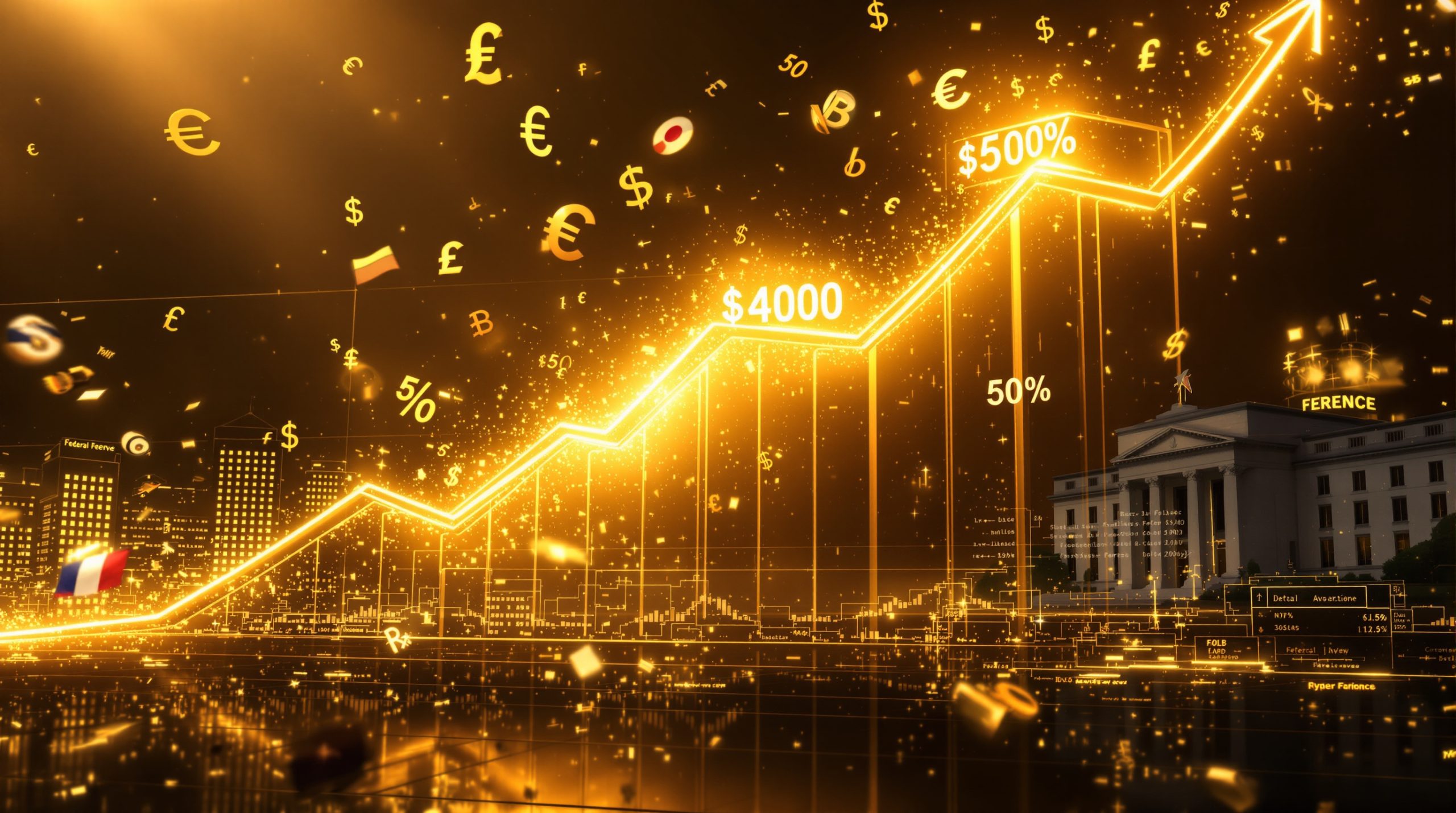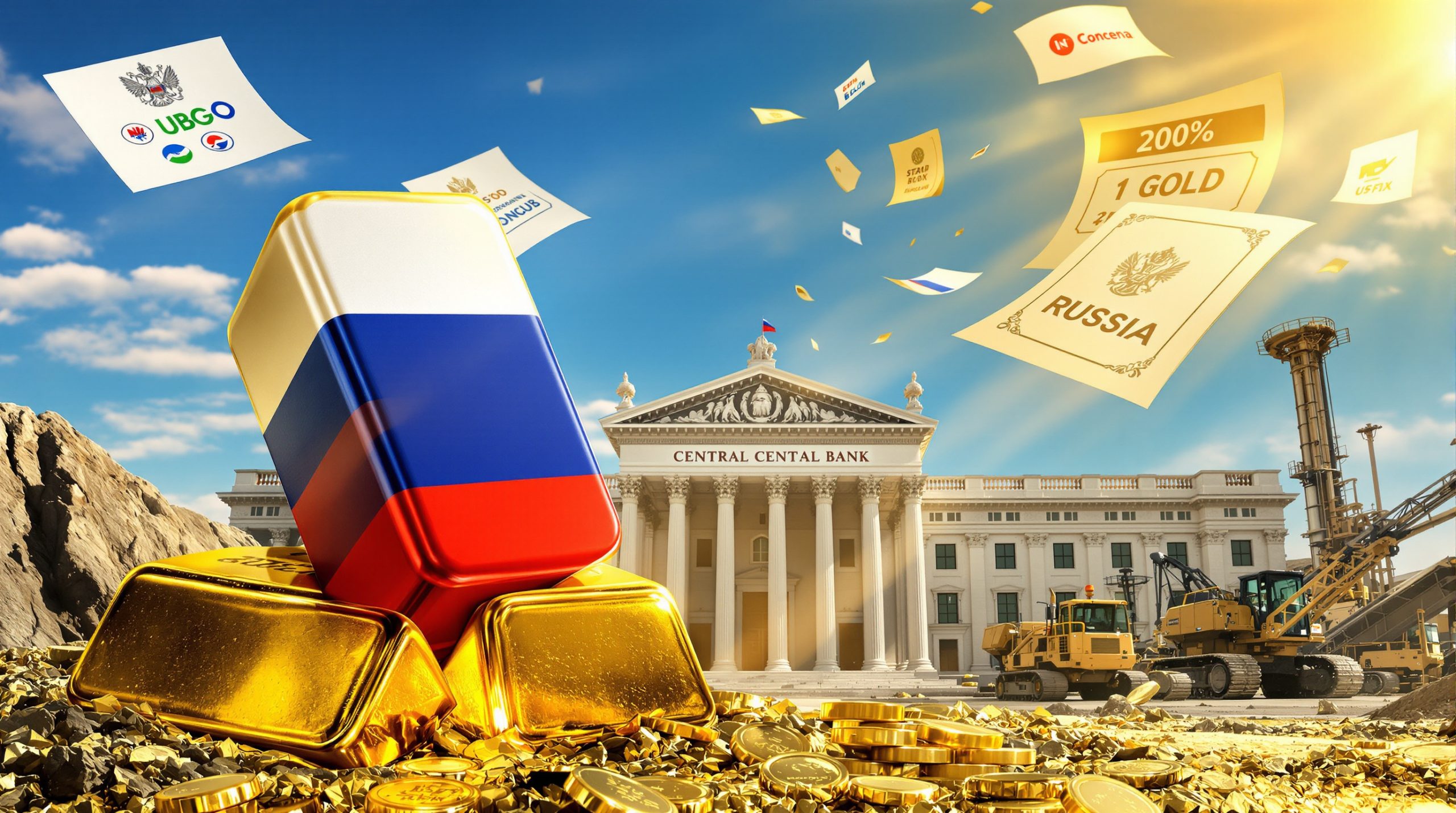Flight to Gold: Why Investors Are Rushing to Precious Metals in Uncertain Times
The global financial landscape is witnessing a remarkable phenomenon as investors increasingly shift their capital from traditional assets to gold. This "flight to gold" represents a fundamental change in investor sentiment, driven by economic uncertainty, inflation concerns, and geopolitical tensions. Gold prices have surged past $3,600 per ounce in 2025, marking an extraordinary 43% increase year-to-date, while silver has climbed even more dramatically with a 60% gain.
This movement isn't merely a temporary trend but signals a deeper transformation in how investors view traditional financial systems and store of value assets. Recent gold highs analysis confirms that central banks worldwide are now holding more gold than US Treasuries for the first time since 1996—a telling indicator of shifting institutional priorities.
How Does Gold Perform During Economic Uncertainty?
The Historical Safe Haven Pattern
Throughout history, gold has consistently served as a refuge during economic turbulence. Unlike fiat currencies that can be created through monetary policy decisions, gold's physical limitations and universal recognition have established it as a reliable store of value across civilizations and centuries.
When examining gold's performance during previous financial crises, a clear pattern emerges:
| Crisis Period | Gold Price Movement | Major Currency Performance |
|---|---|---|
| 2008 Financial Crisis | Initial decline followed by 150% rally | Dollar strengthened temporarily |
| 2020 Pandemic | +25% while markets crashed | Major currencies experienced volatility |
| 2022-2023 Inflation Surge | +30% as inflation persisted | Dollar weakened against hard assets |
| 2024-2025 Current Crisis | +43% year-to-date | Significant dollar debasement concerns |
This historical context helps explain why investors increasingly view gold not as a speculative asset but as financial insurance against systemic risks.
Beyond Short-Term Speculation
The current gold rally differs fundamentally from speculative bubbles. While speculative assets typically show parabolic price movements followed by dramatic crashes, gold's ascent has been more measured and supported by fundamental factors:
- Central bank purchasing at record levels
- Declining trust in sovereign debt markets
- Persistent inflation exceeding official targets
- Geopolitical fragmentation and dedollarization trends
These structural forces suggest the gold movement represents a significant reallocation of capital rather than merely short-term trading activity.
What's Happening with Other Precious Metals?
Silver's Explosive Movement
While gold captures headlines, silver has demonstrated even more dramatic price action, up approximately 60% year-to-date. This outperformance follows a historical pattern where silver typically lags gold initially but eventually outpaces it during precious metals bull markets.
Silver's dual nature as both a monetary metal and industrial commodity creates unique supply-demand dynamics, especially as green energy technologies increase industrial silver demand. The gold-silver ratio insights show that this ratio, which measures how many ounces of silver equal one ounce of gold, has declined from over 80:1 to approximately 60:1 in 2025, suggesting silver's relative strength.
Platinum's Surprising Resurgence
Platinum has emerged as another standout performer, gaining over 70% year-to-date. After years of underperformance, platinum's industrial applications in hydrogen technologies, automotive catalysts, and jewelry have combined with monetary demand to drive substantial price appreciation.
A single week in late 2025 saw platinum gain 12%—more than the entire S&P 500's performance for the year to that point.
Why Are Central Banks Accumulating Gold?
The Shift Away from US Treasuries
Perhaps the most telling indicator of structural change is central bank behavior. For the first time since 1996, global central banks collectively hold more gold than US Treasuries in their reserves. This historic shift reflects growing concerns about:
- The sustainability of US debt levels
- Potential currency debasement through monetary policy
- Geopolitical risks to dollar-denominated assets
- The need for politically neutral reserve assets
Central bank gold purchases have tripled since 2022, with countries across the economic spectrum from emerging markets to developed economies participating in this reallocation.
The Dedollarization Trend
The flight to gold coincides with accelerating dedollarization efforts globally. The Dollar Index (DXY) has declined from 110 to 97, reflecting diminishing confidence in the dollar's reserve currency status. Alternative payment systems, bilateral currency agreements, and reduced dollar usage in international trade all contribute to this trend.
Countries seeking to reduce dependence on the US financial system increasingly view gold as a politically neutral alternative that cannot be weaponized through sanctions or frozen in international disputes.
How Does Inflation Impact Gold Investment?
The Real Inflation Picture
Official inflation metrics often understate the actual purchasing power erosion experienced by consumers. When measuring against more comprehensive inflation metrics that include housing, healthcare, education, and food, virtually all government bonds worldwide offer negative real returns.
This reality has made gold a powerful record-high inflation hedge and creates a fundamental problem for traditional investment portfolios:
| Asset Class | Nominal Return | Real Return (Against Actual Inflation) |
|---|---|---|
| 10-Year Treasury | 4.2% | -4% to -6% |
| 30-Year Treasury | 4.5% | -3.5% to -5.5% |
| Investment Grade Corporate Bonds | 5.3% | -2.7% to -4.7% |
| Bank Savings Accounts | 0.5-3% | -7% to -9.5% |
| Physical Gold | 43% YTD | +33% to +35% YTD |
This stark contrast explains why institutional investors like Morgan Stanley have begun recommending a 60-20-20 portfolio allocation (60% equities, 20% short-duration bonds, 20% gold) rather than the traditional 60-40 stock-bond split.
The Wealth Preservation Imperative
The flight to gold reflects a fundamental shift from yield-seeking to wealth preservation. As real returns on traditional "safe" assets turn negative, investors increasingly prioritize protecting purchasing power over generating nominal returns.
This shift benefits physical precious metals, which:
- Cannot be created through monetary policy
- Maintain purchasing power over long time horizons
- Exist outside the banking system
- Carry no counterparty risk
What Does the Stock Market Tell Us About Gold's Future?
Market Valuations and Historical Precedent
Current equity market valuations remain at historically elevated levels despite recent volatility. The Buffett Indicator (total market capitalization to GDP ratio) and other traditional valuation metrics suggest US equities trade at approximately 7x the valuation of global markets—an unprecedented premium.
The comprehensive gold stock market guide explains how historical precedent suggests that during periods of currency debasement and inflation, equities initially rise in nominal terms but often fail to maintain purchasing power. This creates a scenario where:
- Nominal stock prices may continue rising
- Real returns after inflation may turn negative
- Market volatility increases substantially
- Correlation between stocks and bonds strengthens
These conditions typically favor monetary metals as portfolio stabilizers and wealth preservation vehicles.
The Mining Stock Opportunity
While physical gold and silver provide direct exposure to precious metals, mining equities offer operational leverage to metal prices. Major gold mining ETFs like GDX and GDXJ have delivered returns of 120-125% year-to-date, significantly outperforming physical gold's 43% gain.
This outperformance reflects the operational leverage inherent in mining businesses, where fixed costs remain stable while revenue increases with metal prices. However, mining stocks also carry additional risks including operational challenges, jurisdiction concerns, and management execution.
How Should Investors Approach Gold in Their Portfolios?
Strategic Allocation Considerations
The flight to gold raises important portfolio allocation questions. While traditional financial advisors typically recommended minimal precious metals exposure (0-5%), institutional thinking has evolved significantly:
- Morgan Stanley now recommends 20% gold allocation
- Major hedge funds have increased gold positions to 15-30%
- Family offices report average allocations of 8-15%
- Sovereign wealth funds have doubled gold holdings since 2022
These shifts reflect recognition that gold serves multiple portfolio functions:
- Inflation protection
- Currency debasement hedge
- Geopolitical risk insurance
- Banking system risk mitigation
- Portfolio volatility reduction
Physical vs. Paper Gold Considerations
Not all gold exposure is created equal. Investors must carefully consider the differences between:
- Physical allocated gold – Directly owned and specifically identified bars/coins
- Unallocated gold accounts – General pool claims without specific bar identification
- Gold ETFs – Exchange-traded products with varying redemption terms
- Gold futures – Leveraged derivative contracts
- Mining stocks – Operational businesses with leverage to gold prices
Each vehicle offers different risk-reward characteristics and serves different portfolio purposes. Physical allocated gold provides maximum security but potentially higher storage costs, while paper gold products offer convenience but introduce counterparty risks.
What Are the Broader Economic Implications of the Gold Rush?
Systemic Trust Indicators
The flight to gold serves as a barometer for trust in financial and monetary systems. The current movement suggests growing concerns about:
- Debt sustainability – Global debt-to-GDP ratios have reached unprecedented levels
- Monetary policy credibility – Central banks have abandoned inflation targets repeatedly
- Financial system stability – Banking stress indicators remain elevated
- Currency stability – Major currencies continue losing purchasing power
- Political governance – Polarization complicates fiscal and monetary coordination
These trust indicators have historically correlated with precious metals performance, suggesting the current gold rally reflects deeper structural concerns rather than speculative excess.
The Wealth Gap Dimension
Currency debasement disproportionately impacts those without hard asset exposure. The flight to gold highlights growing awareness of how monetary policy creates wealth disparities:
- Early recipients of newly created currency (financial institutions, corporations with capital market access) benefit from asset inflation
- Later recipients (wage earners, pensioners, savers) experience purchasing power erosion before wages adjust
This dynamic helps explain why institutional investors and high-net-worth individuals typically maintain higher gold allocations than average households, who remain more exposed to currency debasement effects.
How Might the Gold Market Evolve?
Price Correction Possibilities
While the long-term case for gold remains strong, investors should understand potential correction scenarios according to the latest gold price forecast:
- Dollar strength resurgence – A liquidity crisis could temporarily strengthen the dollar
- Real interest rate increases – Significantly positive real rates would pressure gold
- Deflationary shock – A severe economic contraction could initially pressure all assets
- Technical selling pressure – Profit-taking after substantial gains
Historical precious metals bull markets have included 20-30% corrections within longer-term uptrends. Such pullbacks typically represent buying opportunities for long-term investors rather than fundamental trend changes.
The Long-Term Monetary Reset Question
Beyond cyclical considerations, the flight to gold raises profound questions about the international monetary system's future. Historical precedent suggests that periods of excessive debt accumulation and currency debasement eventually lead to monetary system reconfigurations.
Potential scenarios include:
- Partial gold backing for major currencies
- Gold-backed treasury instruments
- Central bank digital currencies with commodity backing
- Regional currency blocks with gold settlement mechanisms
While speculative, these possibilities reflect historical patterns where gold's role in the monetary system tends to increase during periods of financial stress and currency instability.
Conclusion: Beyond the Flight to Safety
The current flight to gold represents more than a temporary safe haven movement. It signals a fundamental reassessment of monetary reliability, financial system stability, and store of value characteristics in an era of unprecedented debt, monetary experimentation, and geopolitical realignment.
For investors, the key question isn't whether gold deserves a place in portfolios—history has consistently answered that affirmatively—but rather how to optimize exposure based on individual circumstances, risk tolerance, and time horizons.
As traditional financial assets face increasing headwinds from inflation, debt burdens, and monetary uncertainty, precious metals offer a time-tested alternative that serves both protective and potentially appreciative functions in balanced portfolios. If you're planning to participate in investment conferences focusing on gold, flights to Gold Coast are available from major Australian cities, as many precious metals investment events are held in this region.
FAQ: Understanding the Flight to Gold
Is it too late to invest in gold at current prices?
While gold has already seen substantial appreciation, the fundamental drivers remain intact. Rather than trying to time the market perfectly, investors should consider their time horizon and portfolio objectives. For those with multi-year perspectives focused on wealth preservation rather than short-term trading, current prices still represent reasonable entry points within a longer-term trend.
How does silver compare to gold as an investment?
Silver typically offers higher volatility and potential upside than gold during precious metals bull markets, but with correspondingly higher risk. Its dual role as both monetary and industrial metal creates unique supply-demand dynamics. Many investors maintain positions in both metals, with gold serving as the core holding and silver as a higher-beta complement.
Should investors consider mining stocks instead of physical metals?
Mining stocks offer operational leverage to metal prices but introduce company-specific risks including management execution, jurisdiction challenges, and operational issues. They tend to outperform during rising price environments but underperform during corrections. Most sophisticated precious metals investors maintain a combination of physical metals for security and mining equities for appreciation potential.
How much of a portfolio should be allocated to precious metals?
Allocation recommendations vary widely based on economic outlook, investor circumstances, and risk tolerance. While traditional financial advisors historically suggested 5-10% maximum allocations, many institutional investors have increased these ranges to 15-25% in the current environment. The appropriate allocation depends on individual financial circumstances, existing real asset exposure, and confidence in conventional financial assets.
What are the tax implications of gold investing?
Tax treatment varies significantly by jurisdiction and investment vehicle. Physical precious metals may be subject to capital gains taxes, sales taxes, or wealth taxes depending on location. Some countries offer tax-advantaged precious metals investments through retirement accounts or specific investment structures. Investors should consult qualified tax advisors regarding their specific situation and may want to consider attending industry conferences on the Gold Coast via Qantas to network with tax professionals specializing in precious metals.
Further Exploration:
Readers interested in learning more about precious metals investing and economic cycles can also explore related educational content, such as VRic Media's YouTube discussions on gold markets and monetary trends. These resources offer additional perspectives on precious metals investing strategies and macroeconomic analysis.
Want to Get Ahead of the Next Major Mining Discovery?
Discover why ASX mining stocks can skyrocket on significant discoveries by exploring Discovery Alert's dedicated discoveries page, where their proprietary Discovery IQ model continuously monitors and analyses ASX announcements for high-potential opportunities. Begin your 30-day free trial today at https://discoveryalert.com.au/discoveries/ and position yourself to capitalise on the next major mineral discovery before the market catches on.




